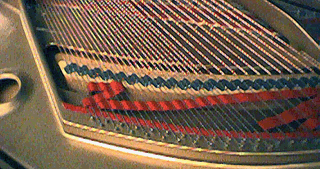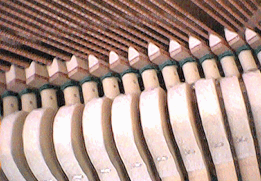 Grand and upright pianos are full of pretty
Grand and upright pianos are full of pretty
felt that comes in a variety of colors.
|
The best way is to insulate all the parts that might rub together or rattle against one another, especially where there are moving parts that have to sit right up against each other. 

